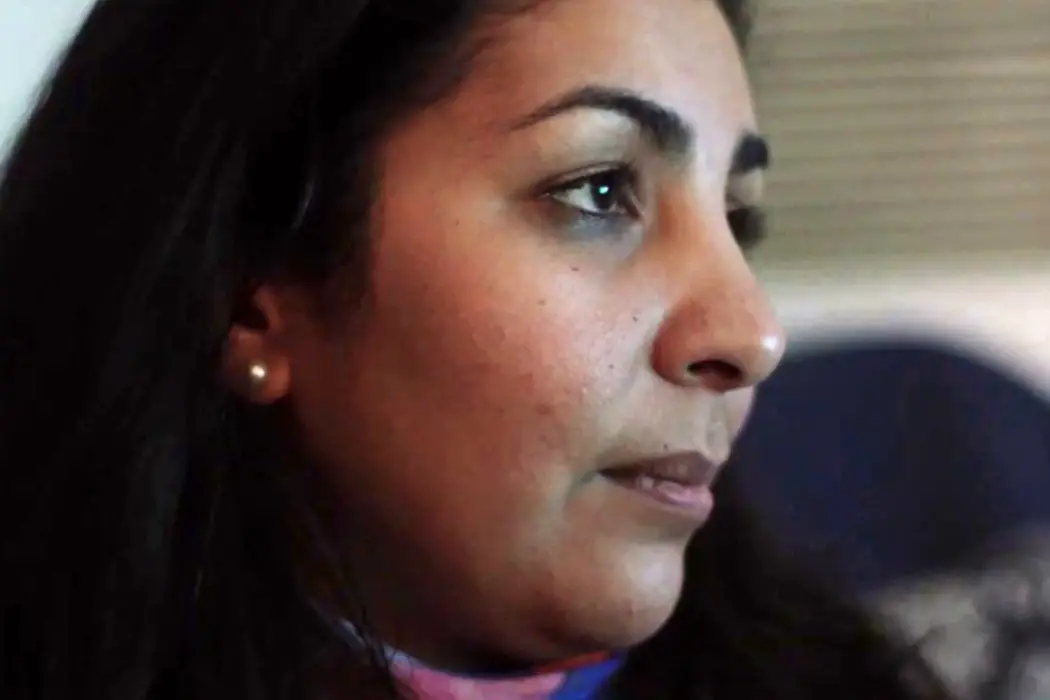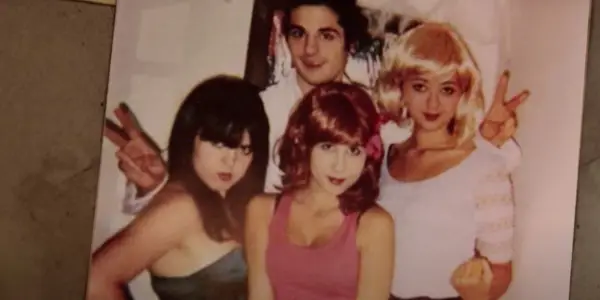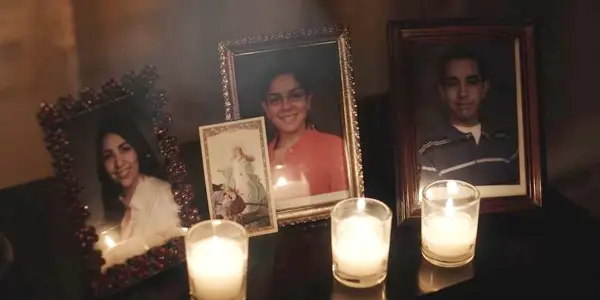STOLEN YOUTH: INSIDE THE CULT AT SARAH LAWRENCE: A Nightmarish Documentary Of Pain, Trauma And Hope

Stephanie Archer is 39 year old film fanatic living in…
With the introduction of streaming platforms, as well as their growing variety, crime documentaries have found themselves the ability to not only reach millions but expand the possibility of stories waiting to be told. Where crime reenactments and investigations were once limited to the channels and the funding that would cover them, now face not only a growing fan base, but a wealth of resources to bring devastating crimes to life. Yet, where many have been restricted to reenactments and talking heads, as well as highly documented trials, to relay its crimes and victims, Hulu’s latest docuseries Stolen Youth: Inside the Cult at Sarah Lawrence gives viewers a gut-wrenching first-hand look at the criminality of the mind and soul, its victims’ pain and trauma on full display. Vulnerable and raw, Stolen Youth becomes the documentary of nightmares.
Crafting Cult Mentality
The framework of youth is developed early on through photographs and video, each depicting the close relationship of the Slomin 9, as well as the euphoric and vibrant culture of on-campus life. Those not familiar with the crimes the series is about to tackle will find themselves settling easily into the beginning of “The Arbiter of Truth”. There is an innocence to the beginning of the episode, childlike drawings brought to life to represent not only the transitionary period of college but outlining the youth that will shortly be stolen. It is effective, almost disarming, especially as the series takes on the typical composition of a traditional crime documentary in its opening sequence.

We meet our talking heads immediately, many of whom are the series’ victims. In an instant, Stolen Youth, told not from analysts or legal personnel, but rather the victims deepens in its vulnerability as events begin to unfold. This is their story, told through their words – all accompanied by the documented abuse and mind control of Lawrence Ray. What initially seems innocuous, fellow roommate Talia’s father crashing on their couch after recently being released from prison, slowly begins to disintegrate into a maddening showcase of power. Many viewers may find themselves initially feeling the early stages of grooming conducted by Larry to not be that bad, much of his words and actions seemingly designed to guide one towards being a better person. Yet as the first episode concludes and viewers transition to “Truth Wins”, this densely packed docuseries descends quickly into a gut-wrenching visual and auditory exploration of power and cult mentality.
Normally, documentation of crimes are limited to retellings and projections of evidence. Often, crime documentaries and crimes series are limited to talking heads accompanied by reenactments to bring to life the horror the film or series is unfolding. With Stolen Youth, it is front and center, impossible to look away from, and gut-wrenchingly real. Lawrence Ray recorded everything during his time with his victims, both through audio and video.

And the docuseries saturates itself in this evidence, accompanying the words of its victims with the pain and trauma both heard and seen. The camera refuses to look away, refusing at times to break away from the framing as its talking heads relive their experiences on camera. Matching this intensity and commitment, the editing of Ray’s audio and video too refuses to ease on its audience, not for the sheer purpose of creating discomfort but for truly honoring the story. This is not a docuseries that gives into sugar coating the crimes, delivering a raw visual depiction of pain and trauma.
Conclusion:
Stolen Youth takes its time, delivered with precision and intent. At times a hard watch, it is unafraid to show the crime – to show the victim. Yet, in all the darkness, the series retains the everlasting human ability of hope and compassion. As each victim is interviewed throughout the series, director Zach Heinzerling is never seen but is heard asking each person about their experience. Gentle compassion constantly remains in his tone, pressure never applied for an answer, and space allowed for each individual to fill with their perspective and emotional journey. The inclusion of Heinzerling‘s interviewing contrasts the behaviors of Lawrence, firmly grounding the abuse, cult mentality and criminality of his behaviors and crimes.
As “Larryland”, the series final episode unfolds, the darkness is matched by light and a promise of a future to come. Where the past is tainted, it no longer has the control it once had. Where the series has remained committed to capturing the pain and trauma of the cult and its leader, so too it remains in its commitment to fully capture the hope in its aftermath.
Stolen Youth is a vital docuseries in both the world of criminal segments and in the world of psychology. It is an archive of sorts of the pain, trauma, and healing each of these individuals has gone through – and in many cases are still experiencing.
Stolen Youth premieres on Hulu on February 9, 2023!
Watch Stolen Youth
Does content like this matter to you?
Become a Member and support film journalism. Unlock access to all of Film Inquiry`s great articles. Join a community of like-minded readers who are passionate about cinema - get access to our private members Network, give back to independent filmmakers, and more.













